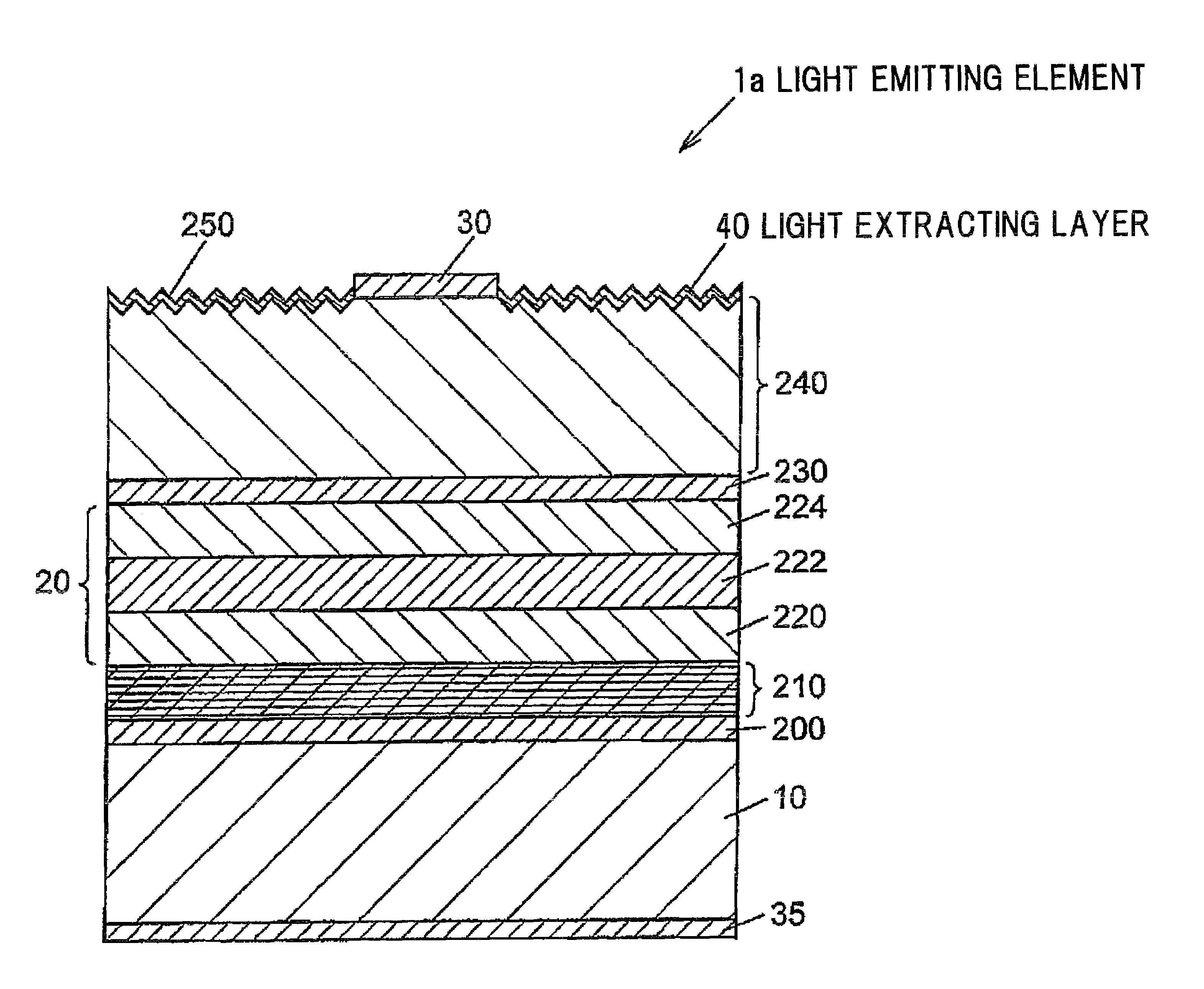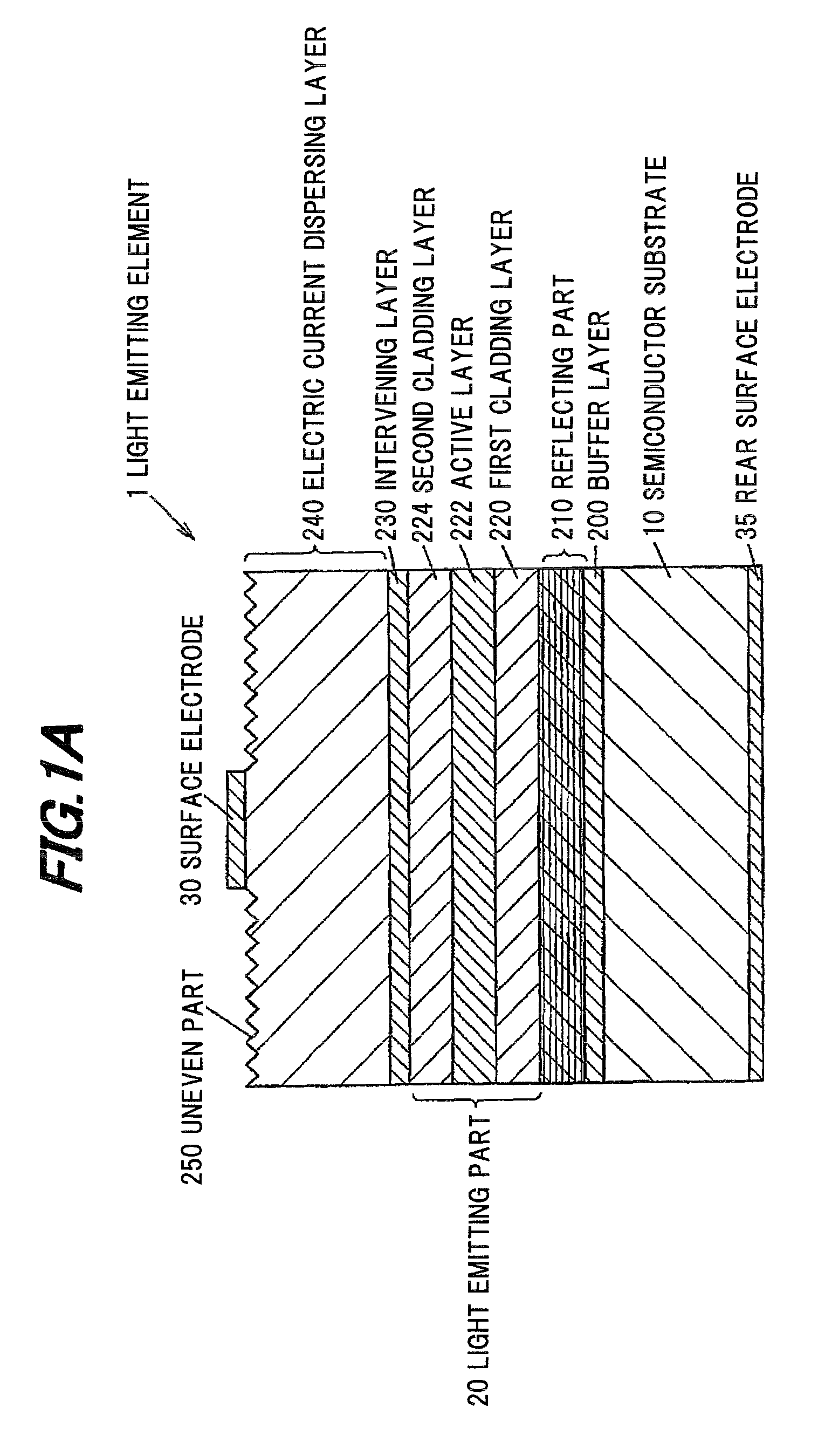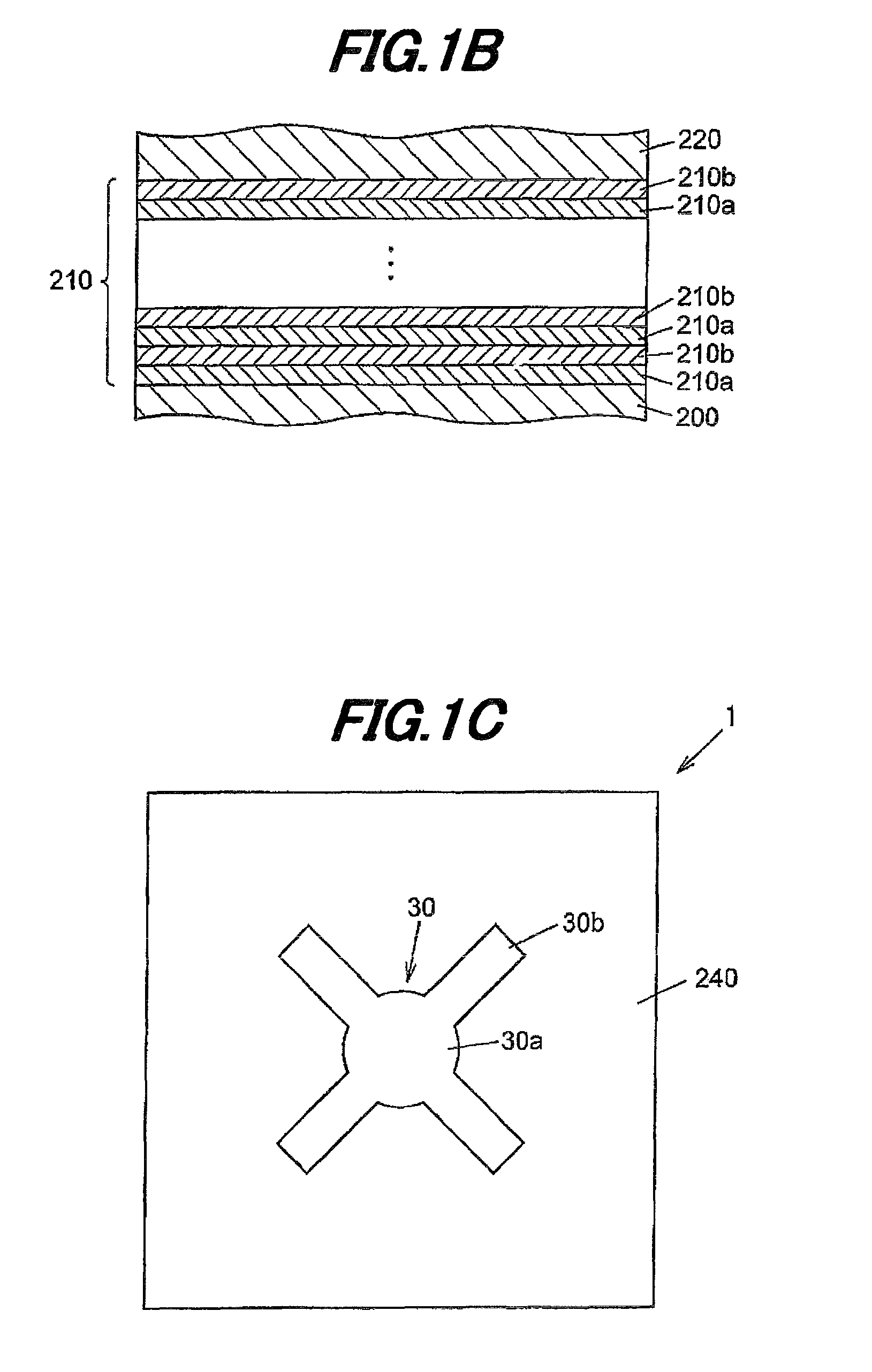Light emitting element
a technology of light-emitting elements and light-emitting components, which is applied in the direction of basic electric elements, electrical equipment, and semiconductor devices, can solve the problems of limitation of light-emitting output enhancement and inability to increase light-emitting output, and achieve the effect of increasing the thickness of the reflecting layer and enhancing the light-emitting outpu
- Summary
- Abstract
- Description
- Claims
- Application Information
AI Technical Summary
Benefits of technology
Problems solved by technology
Method used
Image
Examples
first embodiment
[0047]FIG. 1A is a cross-sectional view schematically showing a light emitting element according to a first embodiment of the invention, and FIG. 1B is a cross-sectional view schematically showing a reflecting part included in the light emitting element according to the first embodiment of the invention. Further, FIG. 1C is a plan view schematically showing a light emitting element according to a first embodiment of the invention.
[0048]Structural Outline of Light Emitting Element 1
[0049]The light emitting element 1 is, as an example, a light emitting diode (LED) for emitting a red light having peak wavelength (λP) adjacent to 631 nm. Particularly, the light emitting element 1 includes an n-type as a first conductivity type semiconductor substrate 10, an n-type buffer layer 200 disposed on the semiconductor substrate 10, a reflecting part 210 disposed on the buffer layer 200 so as to have a laminated structure of an n-type compound semiconductor, an n-type first cladding layer 220 di...
second embodiment
[0091]FIG. 2 is a cross-sectional view schematically showing a light emitting element according to a second embodiment of the invention.
[0092]The light emitting element 1a according to the second embodiment includes almost the same composition as the light emitting element 1 according to the first embodiment except for further including a light extracting layer 40 on the uneven part 250, difference from the light emitting element 1 according to the first embodiment. Therefore, detail explanation will be omitted except for the different points.
[0093]The light emitting element 1a includes the light extracting layer 40 formed on the surface of the electric current dispersing layer 240 except for a region where the surface electrode 30 is formed so as to be formed of a material being transparent to the light emitted from the active layer 222 and having refractive index at the level intermediate between the semiconductor constituting the electric current dispersing layer 240 and air. The...
third embodiment
[0096]FIG. 3 is a cross-sectional view schematically showing a light emitting element according to a third embodiment of the invention.
[0097]The light emitting element 1b according to the third embodiment includes almost the same composition as the light emitting element 1 according to the first embodiment except that the active layer 222 is sandwiched between a first undoped layer 221 and a second undoped layer 223, difference from the light emitting element 1 according to the first embodiment. Therefore, detail explanation will be omitted except for the different points.
[0098]Particularly, the light emitting element 1b according to the third embodiment includes the semiconductor substrate 10, the buffer layer 200 disposed on the semiconductor substrate 10, the reflecting part 210 disposed on the buffer layer 200, a first cladding layer 220 disposed on the reflecting part 210, the first undoped layer 221 disposed on the first cladding layer 220, the active layer 222 disposed on the...
PUM
 Login to View More
Login to View More Abstract
Description
Claims
Application Information
 Login to View More
Login to View More - R&D
- Intellectual Property
- Life Sciences
- Materials
- Tech Scout
- Unparalleled Data Quality
- Higher Quality Content
- 60% Fewer Hallucinations
Browse by: Latest US Patents, China's latest patents, Technical Efficacy Thesaurus, Application Domain, Technology Topic, Popular Technical Reports.
© 2025 PatSnap. All rights reserved.Legal|Privacy policy|Modern Slavery Act Transparency Statement|Sitemap|About US| Contact US: help@patsnap.com



